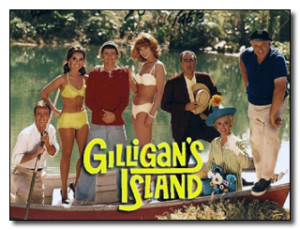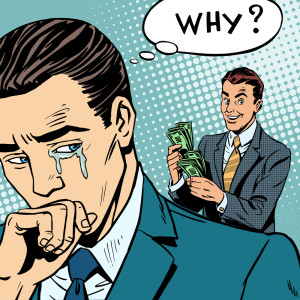Of all the misconceptions by business owners, the ones surrounding their company’s value are both the most common and often wildly inaccurate.
I’ve been working for the last couple of months on the training videos for advisors in our new product, The ExitMap®. (You can take the assessment for free at www.myexitmap.com). In one session, we role-play a vignette about a financial planner discussing the value of a business with a client planning retirement. Part of it goes something like this.
Q: “So Bob, how much do you expect to realize from your business when you sell it?”
A: “I’ve heard from my accountant that most small businesses sell for about five times earnings.”
Q: “And how much would that be?”
A: “Well, I made about $150,000 in salary last year, and another $200,000 in profit. Add in my insurance policies and my car, my wife’s car and a few trips that combined business and pleasure. Say around $500,000 in total benefits. So I’d expect to get somewhere around $2,500,000 for the business.
Q: “What would that be after taxes?”
A: “I’d have to pay capital gains, so I’ll net in the area of $2 million.”
Simple, right? Let’s look at the reality.
 Bob is calculating what the brokerage industry calls “Seller’s Discretionary Benefits” or SDE. While it is a legitimate way to look at the full value of business ownership, ball park valuations of 4-5 times pre-tax earnings don’t apply to that calculation. Cash flow expensed for benefits (rather than dropping to a taxable bottom line), isn’t included in those earnings multiples. The traditional multiple for a small business sale averages 2.5 time SDE, or half of what Bob is estimating. We are immediately reducing the likely price to something like $1,250,000.
Bob is calculating what the brokerage industry calls “Seller’s Discretionary Benefits” or SDE. While it is a legitimate way to look at the full value of business ownership, ball park valuations of 4-5 times pre-tax earnings don’t apply to that calculation. Cash flow expensed for benefits (rather than dropping to a taxable bottom line), isn’t included in those earnings multiples. The traditional multiple for a small business sale averages 2.5 time SDE, or half of what Bob is estimating. We are immediately reducing the likely price to something like $1,250,000.
Next, about 90% of small business sales are asset transactions. Only about 10% close as a transfer of stock ownership. Double that tax estimate from 20% capital gains to a 40% ordinary income rate.
Businesses transfer debt-free. So if Bob owes another $300,000 on his credit line, that comes off the top from the proceeds, but the tax is still payable on that $300,000.
So Bob’s $1,250,000 drops to $750,000 after taxes, and to $450,000 after debt repayment. He has lost three quarters of the amount he was planning on for retirement.
The problem is exacerbated when the planner dutifully enters $2,000,000 in his retirement software, assuming that the owner certainly knows the value of his business. That happens more often than I care to discuss.
These misunderstandings are just the tip of the iceberg. There are another half-dozen common mistakes when owners look at their value. In many cases it results in owners being highly insulted by legitimate offers from qualified buyers. I’ve also seen them renege on accepted offers when they finally have a CPA model the tax impact.
(NOTE: I do not perform valuations, give tax advice, or broker businesses. My recommendations here will not generate revenue for me.)
If you are like 85% of all owners and plan to sell your business to a third party, the first thing to do is engage a valuation professional. The second thing is to take that valuation to your accountant for tax modeling. Start your exit planning by embracing reality. You’ll be a lot happier in the long run.
Thanks for reading “Awake at 2 o’clock”. Please share it with other business owners.
 Perhaps the most amusing application was in “Gilligan’s Island.” The seven castaways fill their assignments well. There’s Gilligan (Sloth), the Skipper too (Wrath). The millionaire (Thurston Howell — Greed) and his wife (Gluttony). The movie star (Ginger — Lust, of course); The professor (Pride) and Mary Ann (Envy), here on Gilligan’s Isle (Hell?)
Perhaps the most amusing application was in “Gilligan’s Island.” The seven castaways fill their assignments well. There’s Gilligan (Sloth), the Skipper too (Wrath). The millionaire (Thurston Howell — Greed) and his wife (Gluttony). The movie star (Ginger — Lust, of course); The professor (Pride) and Mary Ann (Envy), here on Gilligan’s Isle (Hell?) Pride has characteristics that are easily recognizable in some owners. In meetings, do you do all the talking? Do you complain that you are the only one who has new ideas? Does everyone come to you for the solutions to any and every problem? Worse yet, do you insist on it? Do you reprimand employees for making decisions that, while they might work, aren’t exactly the way you would have done it?
Pride has characteristics that are easily recognizable in some owners. In meetings, do you do all the talking? Do you complain that you are the only one who has new ideas? Does everyone come to you for the solutions to any and every problem? Worse yet, do you insist on it? Do you reprimand employees for making decisions that, while they might work, aren’t exactly the way you would have done it? You are guilty of Envy if you think everyone else has better employees than yours. If you believe that other owners are making more money, or have a better work/life balance than you, envy is a problem. The common envious phrase that I hear is “My problems are different. No one else has a business that’s as difficult as mine.”
You are guilty of Envy if you think everyone else has better employees than yours. If you believe that other owners are making more money, or have a better work/life balance than you, envy is a problem. The common envious phrase that I hear is “My problems are different. No one else has a business that’s as difficult as mine.” Greed in your business isn’t the quest for material success. That’s presumably why you own a business in the first place. Greed is a trait that prevents success. Greed is a foolish quest for more without knowing what more is. It’s focusing your efforts on cost and savings in the belief that you never have quite enough…of anything.
Greed in your business isn’t the quest for material success. That’s presumably why you own a business in the first place. Greed is a trait that prevents success. Greed is a foolish quest for more without knowing what more is. It’s focusing your efforts on cost and savings in the belief that you never have quite enough…of anything.